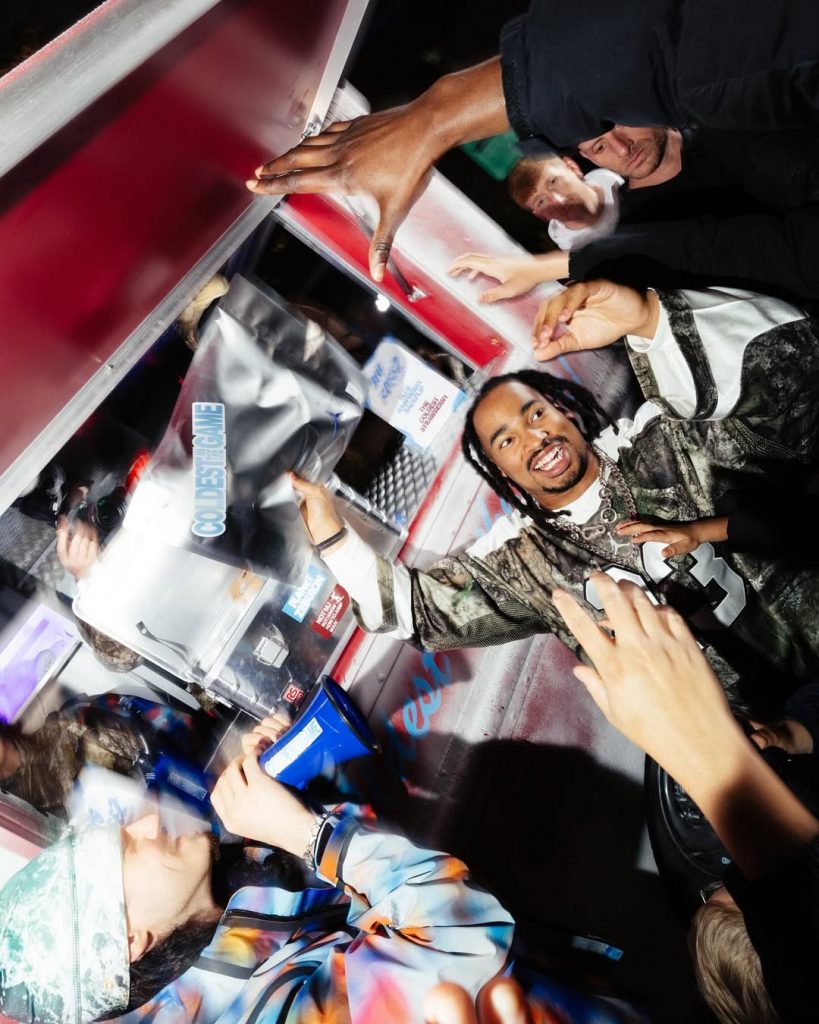In today’s sneaker landscape, it sometimes feels like the industry thinks generosity will win hearts, but handing out free pairs of sneakers isn’t the magic fix it’s made out to be. Last weekend, Jordan Brand flew Zeb Powell to host the “Big Freeze” Ice Cream van with Dukes Cupboard. A helicopter ride across London, a few jerseys tossed from a modified ice cream truck… all of it will be forgotten tomorrow. Honestly, nobody I know who went actually enjoyed being crushed in the crowd, and aside from the photo op, it achieved nothing. What a waste, a generational snowboarding talent brought to the UK for that… crazy.

What Makes a Silhouette Special
A sneaker becomes iconic when it creates a genuine moment, when it tells a story that resonates beyond the product itself. It could be tied to an athlete, a cultural movement, or a breakthrough in design. Take the Air Jordan 1, first released in 1985: its rebellious colourway defied NBA rules, it was Michael Jordan’s first signature shoe, and it connected with a generation craving self-expression through basketball. Or the Nike Air Max 1: its visible Air cushioning wasn’t just innovation, it became a visual symbol that defined a generation. Scarcity mattered, too. These shoes were hard to get, difficult to cop, and every pair carried weight because the experience of earning it, hunting for it, or being part of the moment made it meaningful. It wasn’t about being handed something; it was about being part of the story.
Releases That Defined Eras
When it comes to colourways and collaborations, the most iconic sneakers like the Lobster Dunk, the Undefeated Jordan 4, and the A Ma Maniere 3 became cultural milestones because they challenged the market, sparked genuine hype, and were deliberately limited in supply. The chase mattered as much as the product itself. These were shoes that made people queue, trade, and strategize, where value extended beyond the material: they were experiences, stories, and shared moments that built community and left a lasting imprint on sneaker culture. Each release carried a narrative whether it was the craftsmanship, the design inspiration, or the connection to a player or movement and every pair that changed hands became part of that story. People didn’t just own sneakers; they earned their place in the culture through a shared collective anticipation, and participated in a ritual that transcended the shoes themselves. That tension, that effort, and that sense of belonging is what turned a drop into a memory, making the experience of the hunt just as significant as the product in hand.

The Fallacy of Influencer Seeding
Today, brands often rely on influencer seeding, hoping that handing shoes to the same set of people will spark organic buzz. Reality check, it doesn’t. The market is flooded with familiar faces, and when everyone sees the same influencers wearing the same sneakers, it quickly breeds fatigue and predictability. Influence without a story is hollow; if the person receiving a free pair doesn’t fit the narrative, the gesture adds nothing. A shoe’s value isn’t just in who wears it, it’s in the context, the moment, and the story it helps create. Without that, free product is noise, not culture.
Why Giving Shoes to People Who Will Buy Them Is Counterintuitive
Sneakers gain cultural weight when they are aspirational, when there is a story of desire and discovery. Giving a free pair to someone who would have bought it anyway short-circuits that narrative. It removes the challenge, the excitement, and the personal investment that makes a sneaker memorable. True impact comes from the unexpected moments, the person who didn’t think they could cop, the story behind how someone got their hands on a rare pair, the community they met because of it. These moments can’t be manufactured by simply handing out shoes to the same circle of influencers.

New Perspectives
Some brands are exploring the idea of community-first releases, giving shoes to those who build culture around them rather than just promoting it. It’s about rewarding those who contribute meaningfully to the conversation: local sneakerheads, creatives, and collectors who inspire their peers. This approach shifts focus from a transactional freebie to a genuine cultural investment. Another vision is the experience-driven model. Instead of handing out sneakers, brands can create events, collaborations, or interactive campaigns that allow people to earn their pair through participation, creativity, or skill. This not only deepens the connection to the product but creates stories that last.
Too many “Free things”
There are too many “free things” in the market today and they’re going to the wrong people. It’s starting to kill the magic. We have hit saturation of everything and the energy has gone. When everything is handed out, nothing is earned, nothing feels special, and the narrative disappears. Scarcity and effort are what make moments stick and its time we made sure those who go above and beyond are rewarded. The more brands chase this visibility with giveaways, the more the eroding the very value they’re trying to create.

Conclusion
The sneaker world doesn’t need more free shoes, it needs more stories. It needs experiences that make each pair truly matter. Iconic releases aren’t memorable because they were handed out; they’re memorable because of passion, curiosity, and cultural dialogue. If brands want to create something meaningful, they need to focus on the story and the community, not the convenience of giving away a pair. If you fly in a legendary snowboarder, this isn’t the move… After all Zeb’s Story is special because he resonates, beyond the price tag, beyond the influencers and beyond the free giveaway.
Related posts
Never Miss A Drop
Sign up to our free newsletter to keep your finger on the pulse with exclusive content, raffles, releases and so much more!
Upcoming Releases







